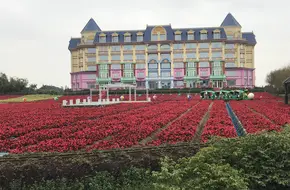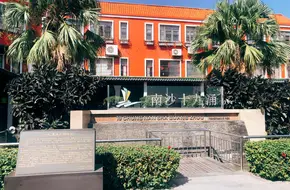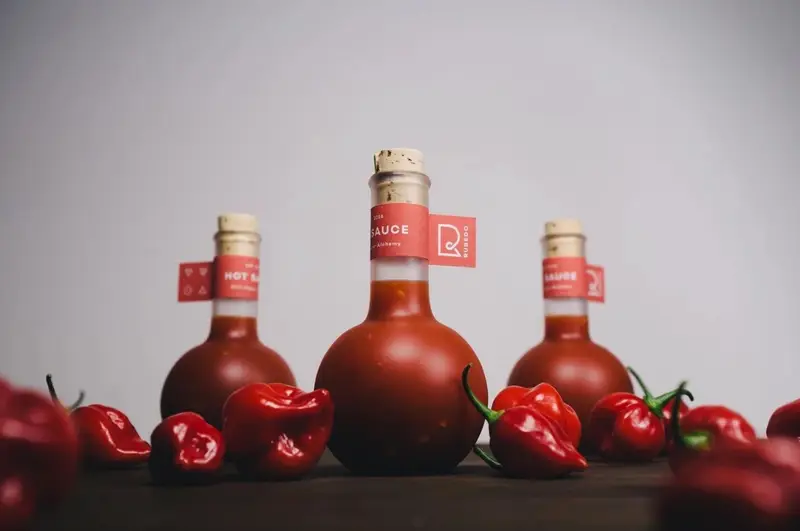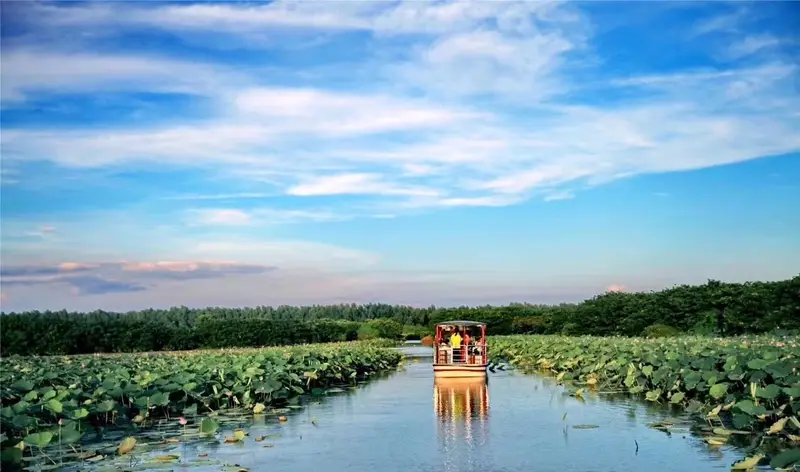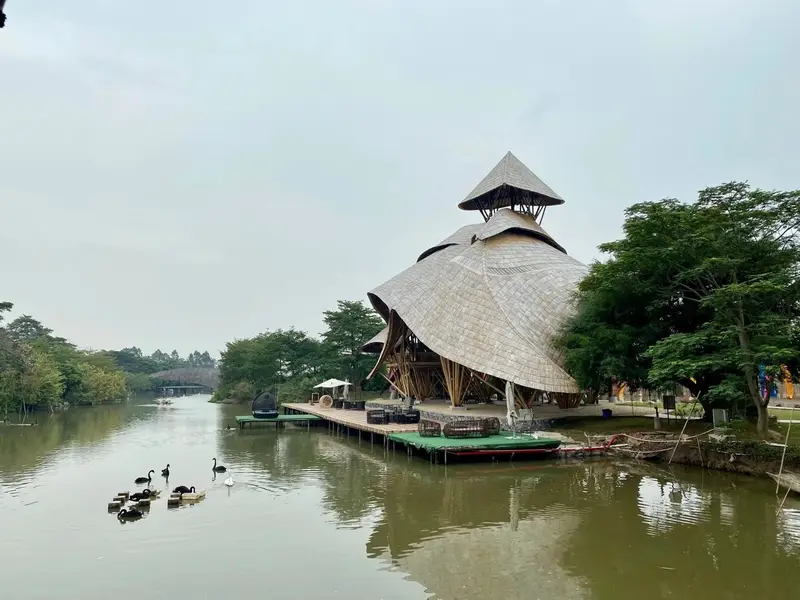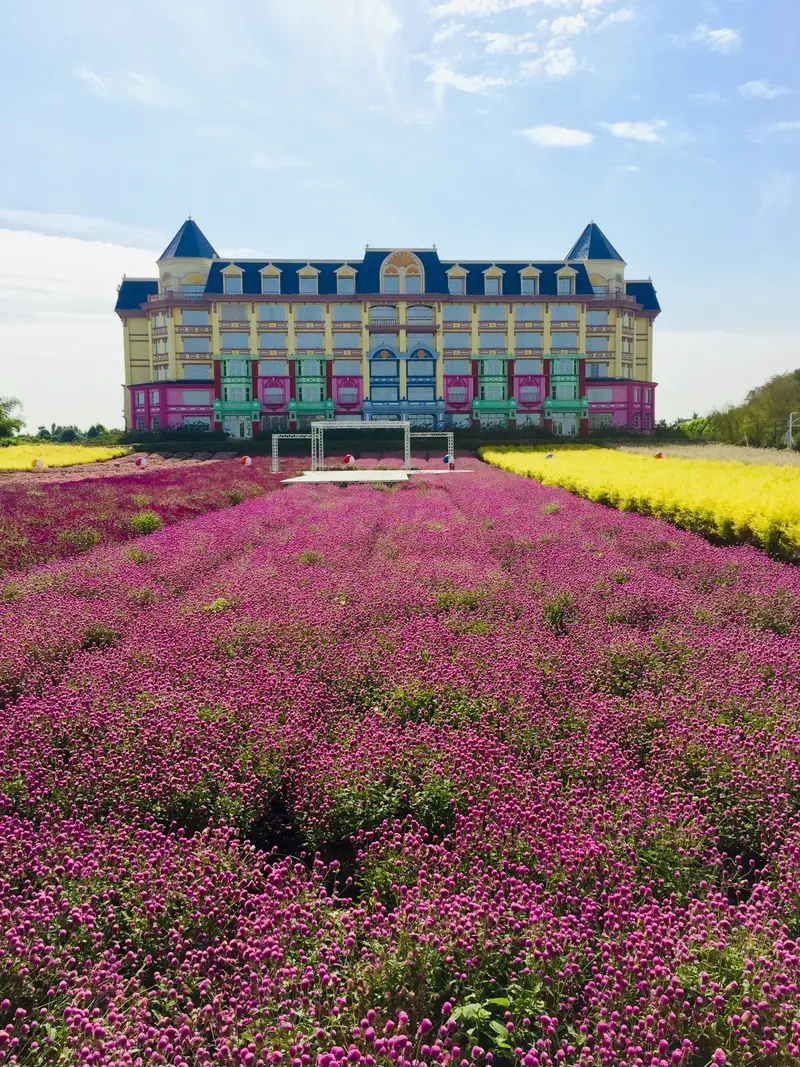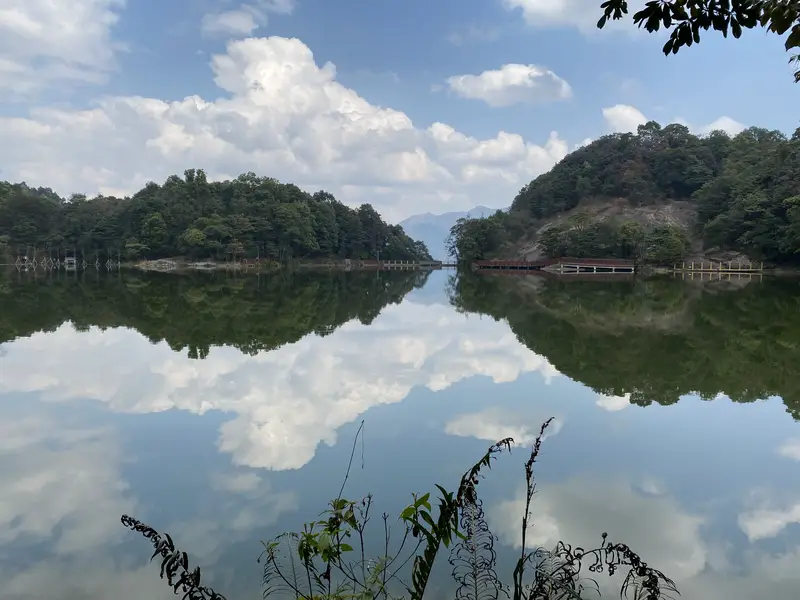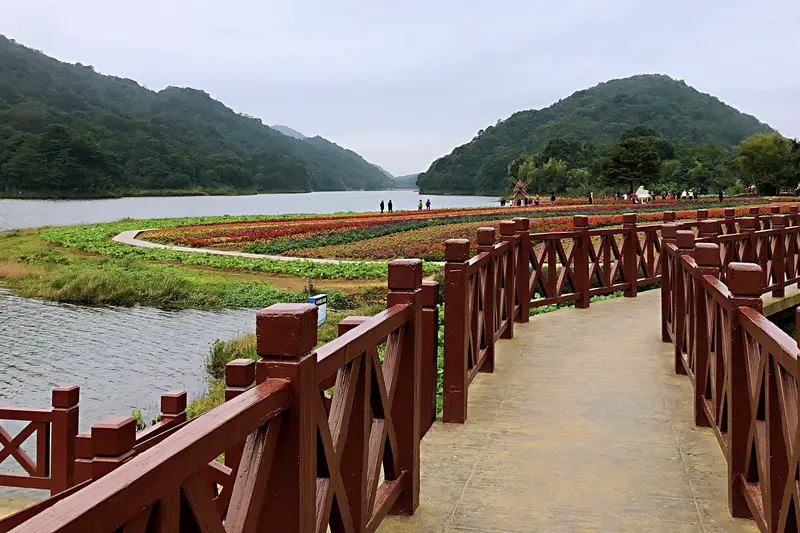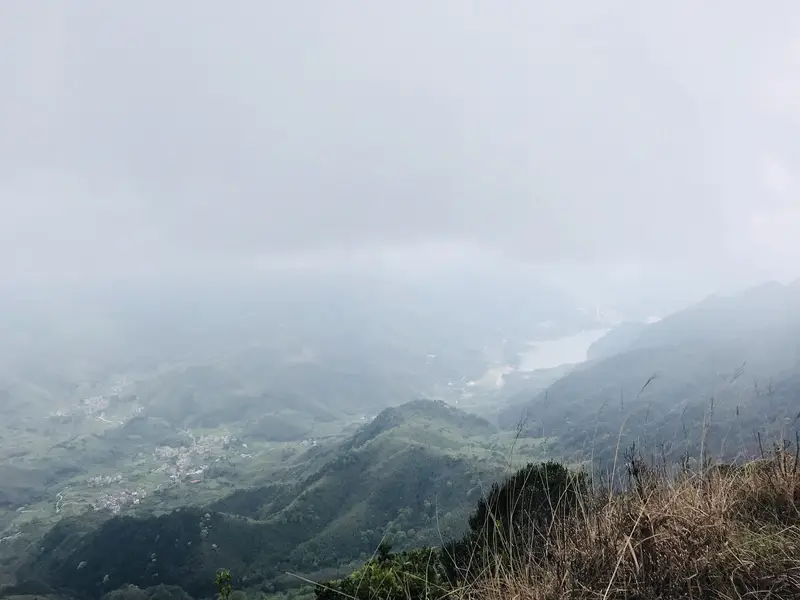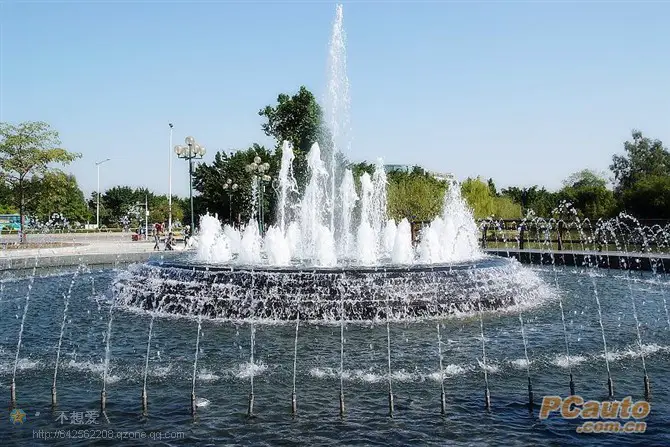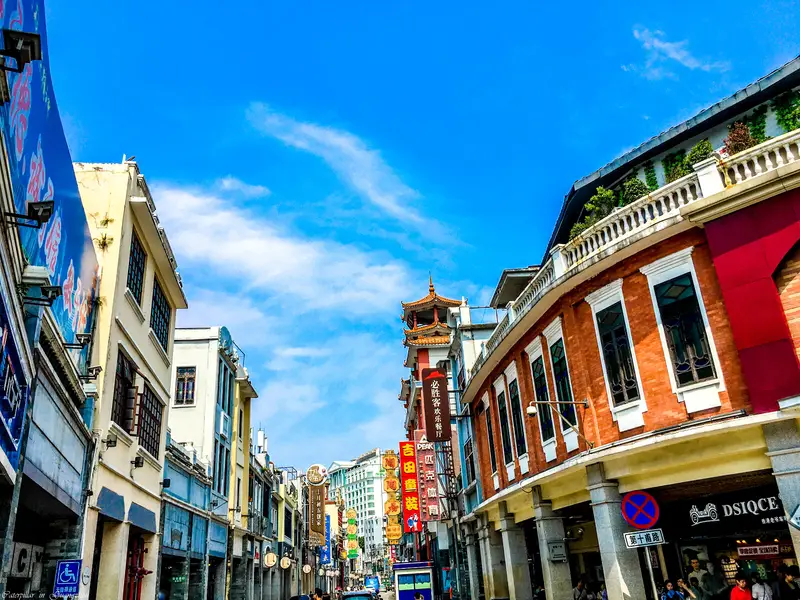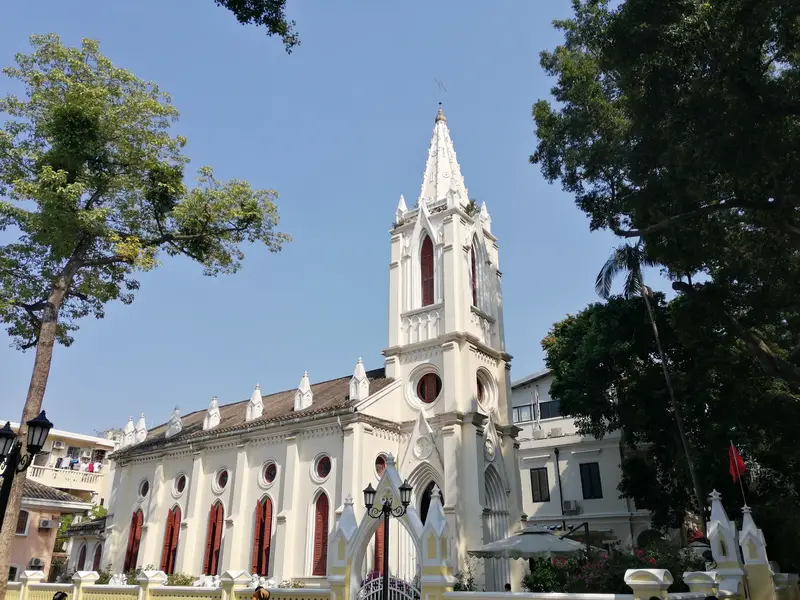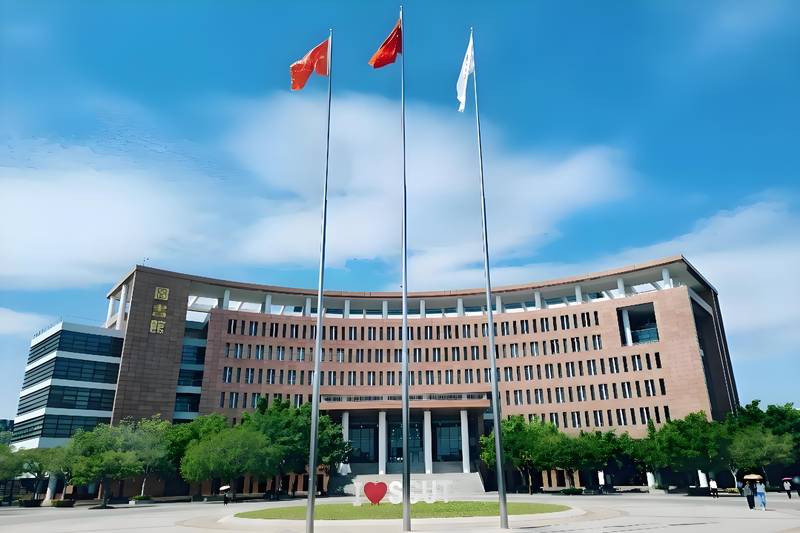Nansha 19th Chong is tucked away in the southernmost tip of Guangzhou, near Haixiang Road in Nansha District. To get here, you can drive along the Yazijai-Nansha Highway and follow signs for “Nansha Port.” If you’re coming from Guangzhou City, it’s about a 1-hour drive. Public transport users can take the metro to Banyu Square and transfer to bus route Nansha GZ50, which drops you close to the entrance. For a scenic route, hop on the Nansha Scenic Tram from Wanjiao Station—it’ll whisk you past mangroves and wetlands straight to Nansha 19th Chong’s lively market area.
Natural Scenery: Sea, Stone, and Sky
Unlike typical beaches, Nansha 19th Chong greets you with a stone-built seawall that stretches into the pearl river estuary, meeting the vast Lingding Ocean (now called Humen). The lack of sandy shores might surprise you, but the rugged charm of the seawall—lined with fishing boats, flocks of egrets, and endless water—makes it unique. At sunset, the seawall transforms into a golden path, with the sky reflecting off the rippling water. Keep an eye out for migratory birds; this area is a protected haven, so binoculars are a must!
Human History: From Reclamation to Ritual
What’s in a name? The “19th Chong” refers to one of 19 seawalls built by young pioneers during the 1970s, who reclaimed land from the sea to create farms. Today, these walls serve as both a historic marker and a lifeline for local fishermen. Stroll along the seawall, and you’ll spot weathered statues commemorating those who shaped this land. The area has also evolved: while once a hub for agriculture, it’s now a buzzing port and seafood hub. Don’t miss the fishermen’s rituals at dawn—they bless their boats with incense and lion dances for safe voyages!
Fresh Finds: Markets, Fruits, and Feasts
Nansha 19th Chong is famous for its seafood market, where vendors shout prices for just-caught shrimp, crab, and fish. Bargain for a feast (or get it cooked at nearby stalls)—it’s cheaper than any restaurant! The region also grows tropical fruits like papaya, bananas, and sugarcane. Visit a local farm to pick your own lotus roots or taste crunchy, juicy carambola (starfruit). For lunch, try pan-fried oyster omelets or sauteed clams at the waterfront eateries.
Practical Tips: What to Bring
- Footwear: Comfy shoes for walking on the uneven seawall.
- Cash: Many stalls prefer cash, though bigger markets take mobile payments.
- Sun Protection: It gets sunny—hats, sunscreen, and shades are essential.
- Early Arrival: Come before noon to catch the freshest seafood and avoid afternoon crowds.
Day-Trip Magic: More Than Just Photos
Start your day at Nansha Wetland Park (a 15-minute drive) to spot flamingos and kingfishers. By mid-morning, head to Nansha 19th Chong for the seafood market hustle. After lunch, wander to the old fishermen’s village nearby, where wooden boats are painted in bright colors. Cap it off with a visit to the lotus ponds in summer—they turn into a pink-and-white sea of blooms.
Whether you’re into history, nature, or just chowing down on ultra-fresh seafood, Nansha 19th Chong offers a slice of Guangzhou’s raw, coastal soul. Just don’t forget your camera—and an empty stomach!



